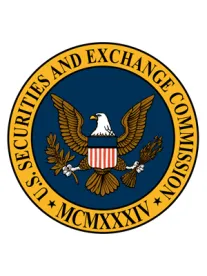The Securities and Exchange Commission (SEC) today adopted long-awaited and highly anticipated amendments to rules under the Investment Company Act of 1940 (the 1940 Act) governing money market funds. At today’s open meeting, the SEC voted 3-2 (with Commissioners Kara Stein and Michael Piwowar dissenting) to adopt amendments to SEC rules that significantly affect the structure and operations of money market funds and are designed to lessen money market funds’ susceptibility to heavy redemptions, improve the ability of money market funds to manage and mitigate potential contagion from high levels of redemptions, and increase for investors the transparency of risks associated with money market funds. At the same time, the SEC sought to preserve the benefits of money market funds.
The rule amendments adopted today are as follows:
-
Prime institutional funds (i.e., all money market funds other than retail money market funds and government money market funds) will be required to have a floating net asset value (rounded to the fourth decimal place) rather than a stable net asset value (NAV). The rule amendments as adopted define “retail” money market funds as those funds that have policies and procedures reasonably designed to limit their beneficial owners to natural persons. The rule amendments define government money market funds as funds that have a policy to invest at least 95.5% of their assets in cash, government securities and repurchase agreements fully collateralized by government securities and/or cash. Municipal money market funds are not specifically exempt from the floating NAV requirements. However, the SEC staff noted at the SEC open meeting that they believed most municipal money market funds could fall within the retail fund exception.
-
A money market fund’s board of directors will be given significant discretion to impose a liquidity fee of up to 2% on all redemptions and/or temporarily suspend redemptions (or gate) for a maximum of 10 business days over a 90-day period (reduced from the 30-day maximum proposed) if the fund’s weekly liquid assets fall below 30% of the fund’s total assets (the current required amount). A money market fund (other than a government fund) would be required to impose a 1% liquidity fee on all redemptions if the fund’s weekly liquid assets fell below 10% (unless the fund’s board feels it is not in the best interest of the fund to impose a liquidity fee or that a lower or higher fee of up to 2% was in the fund’s best interest). “Weekly liquid assets” are defined in Rule 2a-7 as cash, direct obligations of the U.S. government, certain other government securities with remaining maturities of 60 days or less, and certain other short-term securities.
-
All money market funds will be required to comply with additional risk-limiting and disclosure requirements. The SEC adopted additional portfolio diversification, website disclosure, enhanced stress testing and reporting requirements, largely as proposed with some differences.
The SEC also adopted amendments to Form PF under the Investment Advisers Act of 1940 to require large unregistered liquidity funds that could serve as alternatives to money market funds to report the same types of information reported by SEC-registered money market funds on Form N-MFP.
There will be a transition period of two years from the date of publication of the rules in the Federal Register for funds to comply with the floating NAV, liquidity fees and gates rule amendments. Other amendments will have differing and shorter compliance dates.
The SEC also voted unanimously to:
-
Approve the issuance of a notice of exemptive relief from the requirements of Rule 10b-10 under the Securities Exchange Act of 1934 exempting broker-dealers from the immediate confirmation delivery requirements for purchases and sales of shares of floating NAV money market funds; and
-
Re-propose amendments to provisions of Rule 2a-7 under the 1940 Act to remove references to credit ratings, and propose additional amendments to the diversification provisions of Rule 2a-7.
Significant Differences From June 2013 SEC Proposed Amendments
In June 2013, the SEC had proposed two alternatives. The first alternative proposed would have required prime institutional money market funds to have a floating NAV. The second proposed alternative would have permitted all money market funds to continue to maintain a stable NAV, but would have required non-government money market funds to impose a 2% redemption fee if the fund’s “weekly liquid assets” fell below 15% of its total assets, and permitted the fund to temporarily suspend withdrawals if the fund’s liquidity levels dropped below certain specified levels.
Tax and Accounting
There was extensive discussion at today’s SEC open meeting regarding proposals and guidance from the U.S. Department of Treasury and Internal Revenue Service expected to be issued today that would: (i) provide for simplified aggregate tax reporting; and (ii) exempt purchases and sales of money market funds from the “wash sale” rules. It is expected that the IRS guidance and proposals will be effective when the SEC rule amendments become effective.
Please note that this information is based on the SEC Open Meeting of July 23, 2014.



 />i
/>i

